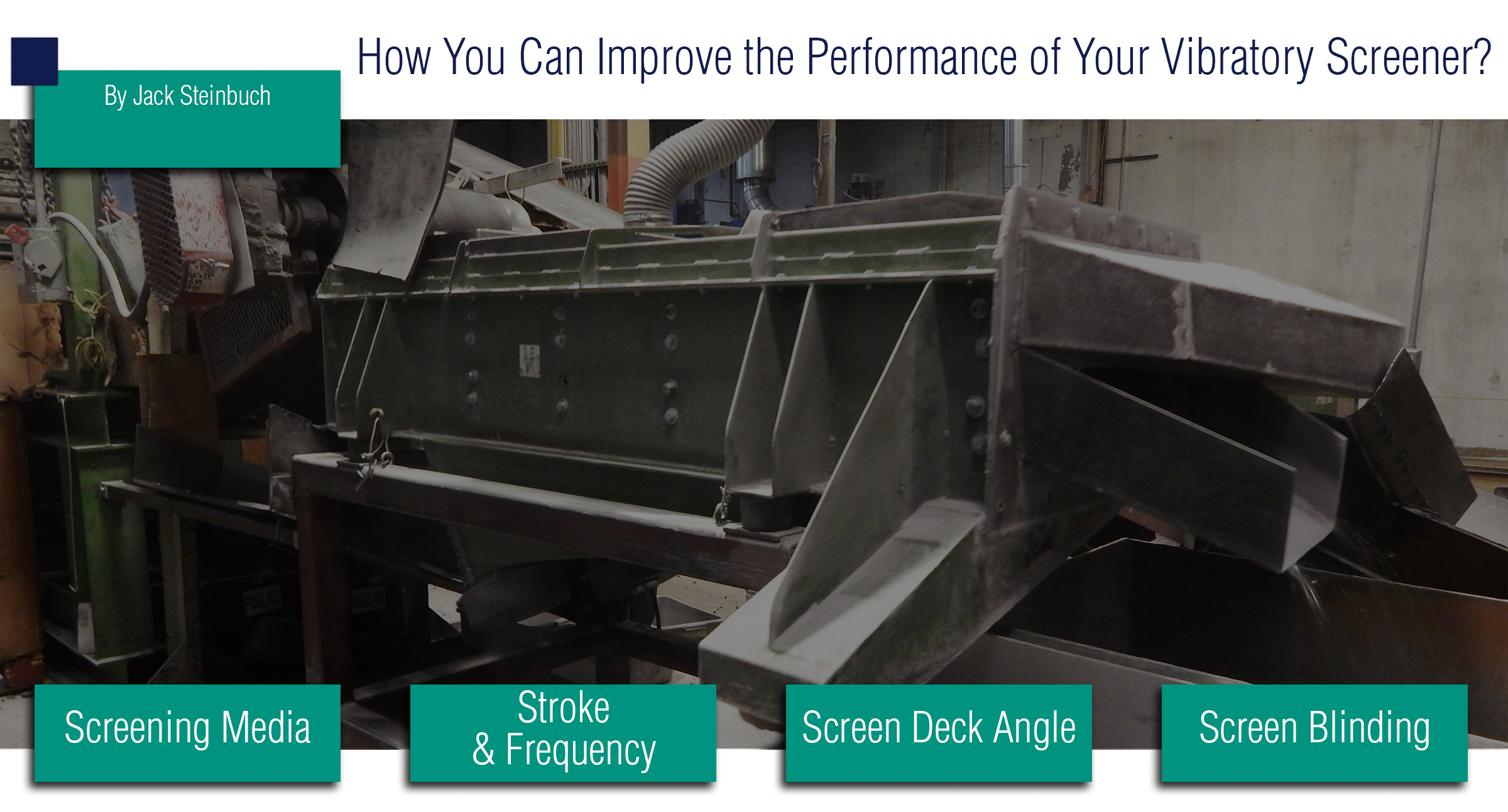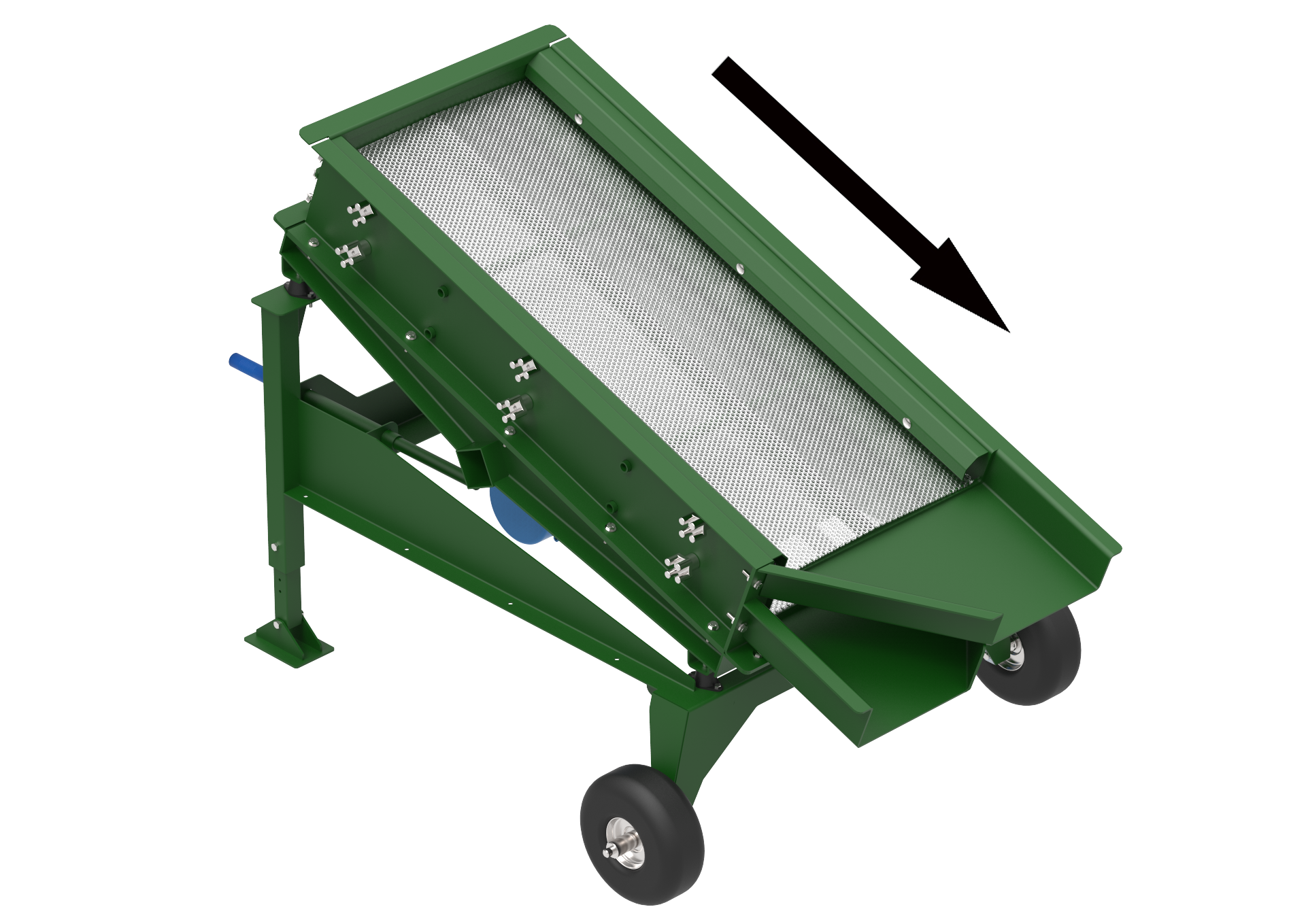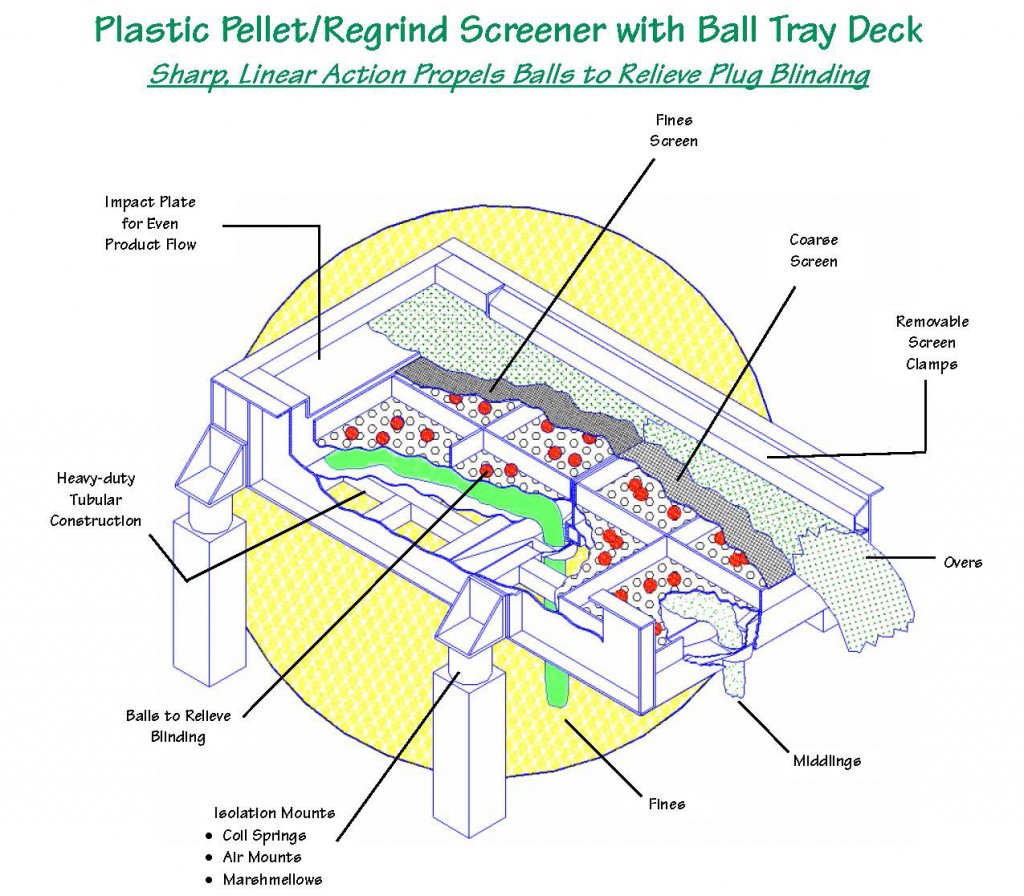We can all agree that the improvement of the performance of any production equipment is a good idea. That being said, we first need to establish the definition of the performance of a screener. I will go with any means to improve the screening efficiency to gain as much of the desired product with the least amount of contamination. We will make the assumption that the correct screener has been selected for the application, so now we will look for ways to improve its performance.
Let’s start with the screening media. There are several to choose from (see my blogs “What you need to know about screening media”), but the most commonly used media is woven wire cloth, so we’ll focus on this one. You could possibly improve performance by changing the openings or the open area. With space (clear square opening) cloth, you could go with a lighter wire diameter to increase the open area which could improve the efficiency of removal of the fines (material that should pass through the screen). With mesh (number of openings in a lineal inch) cloth, the openings are based on the mesh count and the wire diameter. So you have more screen opening options with varying open areas. Choosing a slightly different specification could lead to improved results.
Now let’s focus on the screener. What adjustments are available? Can you adjust the stroke and/or frequency? If yes, you might improve performance with a larger stroke for larger screen openings like ½” and up or reduce the stroke for smaller screen openings. You could fine-tune the force output if you have frequency adjustment. Screeners like our EMS design with twin rotary electric (motor) vibrators allow you to adjust frequency independently from the stroke as the stroke is adjusted manually (with eccentric weights). This provides even greater adjustability, as changing the speed adjusts only the force and consequently the g’s of acceleration without affecting the stroke.
Another adjustment could be the angle of the screen deck. Down sloping will increase the rate of travel of your material as it travels down the screen deck due to gravity assistance, while up sloping will reduce the rate of travel. Changing the rate of travel will affect the bed depth which can be a key component in the performance of a screener. Please keep in mind that changing the angle of the screen deck also affects the effective screen opening which can be critical with finer screen mesh openings if you make a significant downslope adjustment. So you may need to consider switching to slightly larger screen openings to compensate for the amount of sloping you use especially if you’re getting negative results i.e. an increase in the material that should pass through the screen that ends up passing over it.
Blinding (material plugging or covering the openings) of a screen deck will negatively affect the performance of a screener. Plug blinding, when angular material has a small dimension that can enter a screen opening that is too big to pass through and subsequently gets caught or stuck in the aperture can be reduced. A ball tray deck mounted beneath the screen section in many screener designs has been found to reduce plug blinding. The ball tray consists of compartments with a perforated plate at the bottom. Balls are placed in each compartment that allows them to bounce freely during the operation of the screener, striking the underside of the screen surface and therefore randomly knocking out plugged material. The fine material that passes through the screen also passes through the perforated plate openings at the bottom of the ball tray where they can then be collected. Please keep in mind that ball trays may not be a viable retrofit for your existing screener. However, when the time comes to replace or consider an additional screener, you should discuss this alternative if you have plug blinding issues.
Hopefully we’ve provided you with some food for thought to improve the performance of your screener or some parameters to consider when you need to purchase a screener. And remember, the more application data you can provide when looking for assistance, the better your chances of improving the performance of your screener.
Have questions? Our team of experts is here to help!

Jack Steinbuch has been with The Cleveland Vibrator Company for over 36 years accumulatively. He has previous experience in the manufacturing industry as a Senior Application Engineer and has worn many hats on our team in sales and managerial capacities. Now, he’s in the position of General Sales Manager. With a BSCE from The University of Toledo, he is an expert in the realm of sizing vibratory screeners and feeders, and sizing vibratory drives for tables and other vibratory equipment. Understanding that customer service is crucial, Jack believes it is important to provide the proper product for every application, even if it happens to not be supplied by The Cleveland Vibrator Company.
In his off-hours, you can find Jack spending time with his family and playing with his grandchildren. He loves sports; both watching and playing, and is an avid golfer and a league bowler during the winter. He will be retiring at the end of September 2021 and hopes to spend his winters vacationing in Florida.
Follow us:
Share this blog post:




